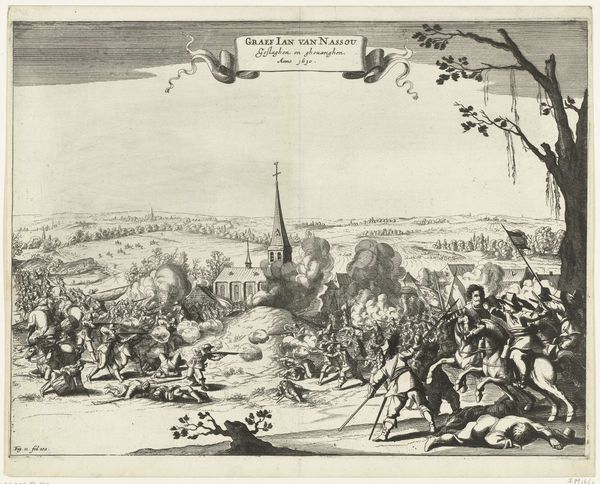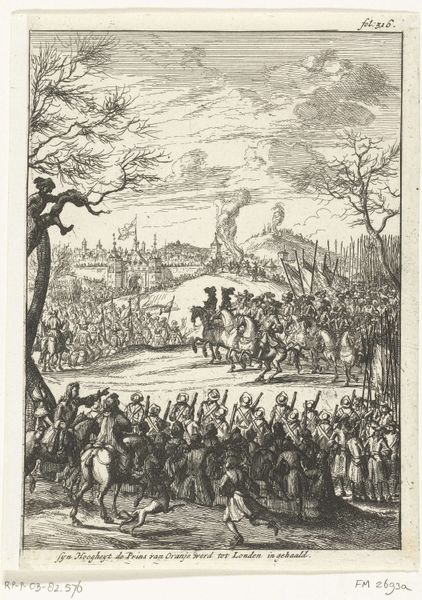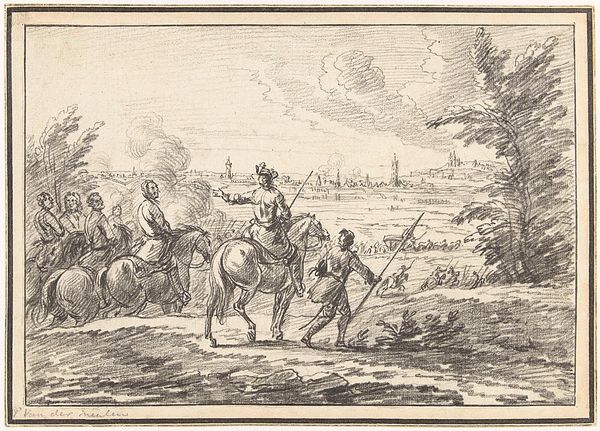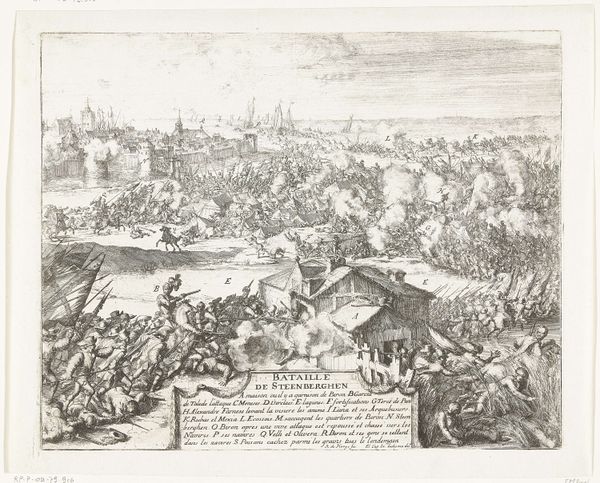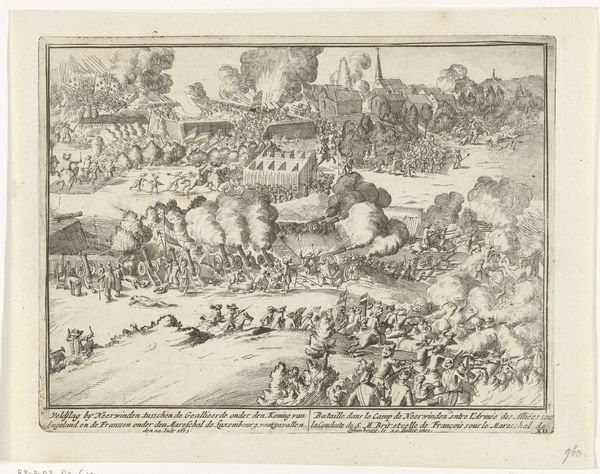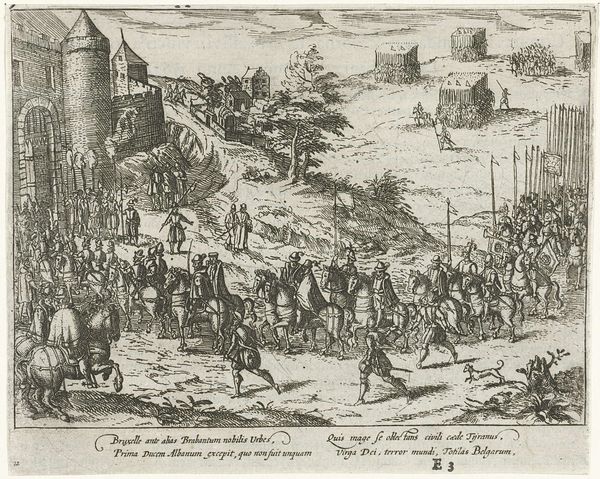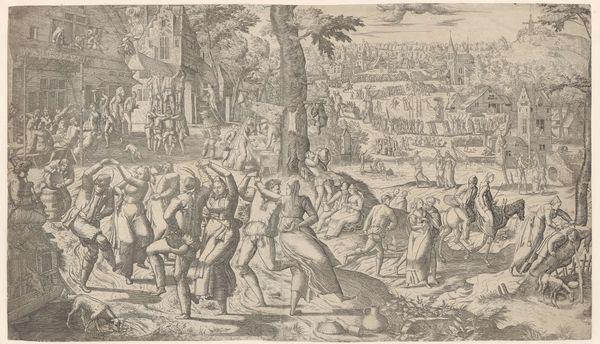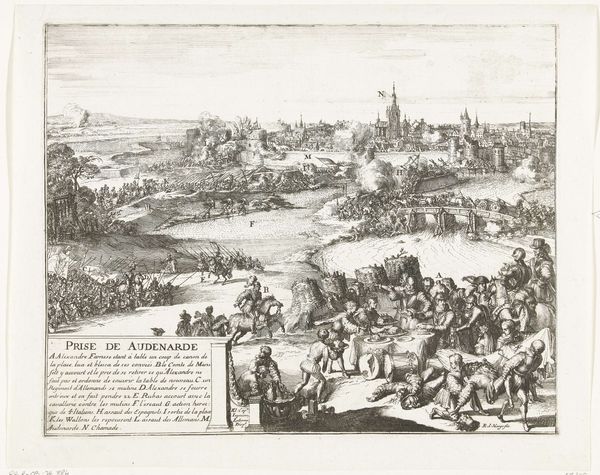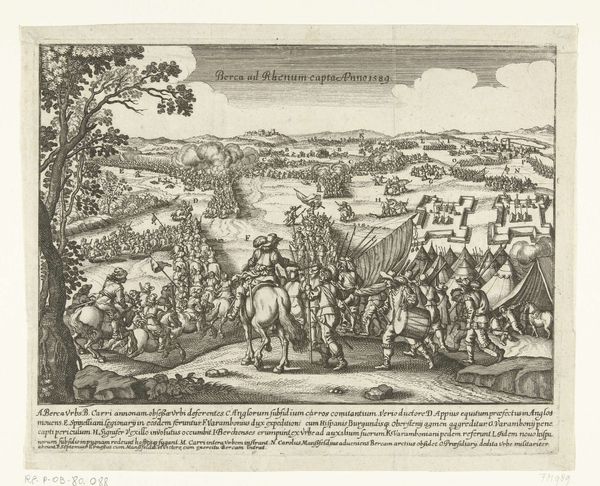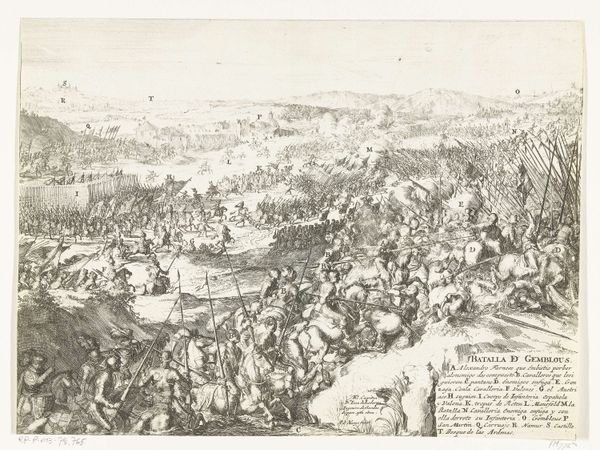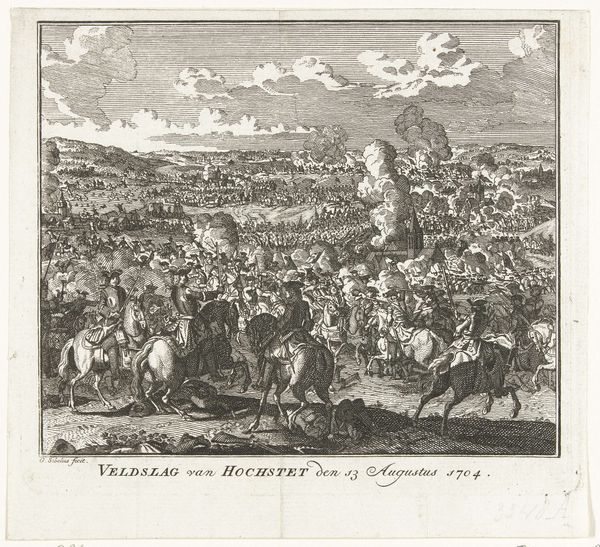
engraving
#
baroque
#
landscape
#
history-painting
#
engraving
Dimensions: height 117 mm, width 159 mm
Copyright: Rijks Museum: Open Domain
Editor: This engraving, "Gevecht bij de Elbe," made between 1682 and 1730 by Jacobus Harrewijn, depicts a battle scene. It’s incredibly detailed, almost overwhelmingly so, yet the eye is drawn to distinct zones through differing mark-making. What stylistic choices stand out to you when viewing it? Curator: Immediately, I’m struck by the composition's spatial articulation. The foreground is tightly packed with figures, but then recedes sharply into the distance where we observe ranks of soldiers meeting with opposing forces. Notice the stark contrast between areas of intense, almost frenetic, linear hatching and quieter passages, such as the river. Editor: Yes, the rendering of depth through line work is remarkable. But, tell me, does the perspective effectively convey the chaos implied in such a large-scale clash? Curator: While the linear perspective provides a sense of depth, its primary function seems less about spatial accuracy and more about structuring the composition to showcase visual contrast. The foreground, with its density of marks, is essentially staged against the comparatively less detailed background. The visual rhythm oscillates between complex textures and relatively simplified ones. Note, too, the consistent horizontality broken up by strong verticals, such as pikes, creating dynamic visual interest. Editor: It’s fascinating how Harrewijn uses engraving to differentiate elements of this chaotic scene. I’m also intrigued by the absence of a focal point; my eye jumps between sections, suggesting a continuous struggle. Curator: Precisely. While individual scenes such as groups of soldiers provide a local point of focus, this all dissipates to form part of a highly textural field when considered as a whole. The totality conveys action more than any localized episode could hope to achieve. Perhaps this absence emphasizes the universal nature of conflict, not tied to any singular actor. Editor: Seeing it broken down like that allows me to view this intricate work in an entirely new way! Thanks for the help. Curator: My pleasure. Remember that often the most complex narratives are rooted in the simplest formal constructs.
Comments
No comments
Be the first to comment and join the conversation on the ultimate creative platform.

